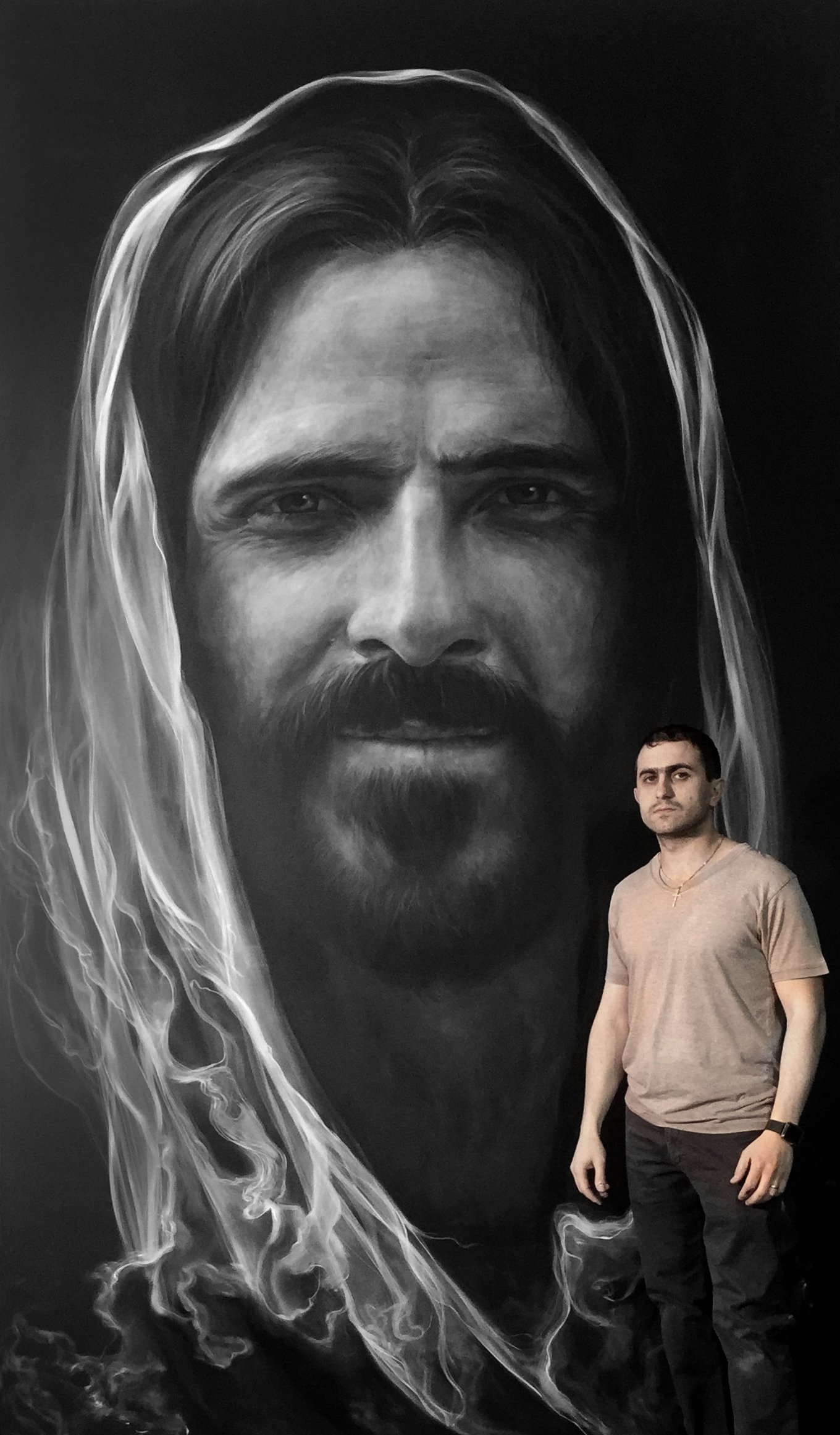A Heartening Conversation with Mher Khachatryan
Photo Credit: Syuzana Arutyunyan
Mher Khachatryan is an Armenian painter based in New York. Mher Is known as the “Smoke Artist.” He received his MFA at the Academy Of Fine Arts in Yerevan, Armenia. His work has been exhibited nationally and internationally in art fairs, galleries, and museums such as Gerald R. Ford Presidential Museum, Webster Hall, United Nations Headquarters, SCOPE, Art Wynwood, and elsewhere. His artwork is held in the collection of the National Museum of Armenia and private collections in Canada, the United States, Armenia, and Russia. In 2018 he was awarded The Two-Dimensional Public Vote Award winner in ArtPrize. Mher founded the Art To Thank organization, which donates painted portraits to Veterans, wounded warriors, and the families of deceased soldiers, and the founder of the Cre8art School. I had the pleasure and honor to ask Mher about his use of black and white, his two organizations, and how he uses art as a form of expression and also protest.
UZOMAH: Can you explain the importance of your piece "My Angel," which is dedicated to the 100th anniversary of the Armenian Genocide"?
MHER: My Angel was based on a true story, and it was painted for the 100th anniversary of the Armenian Genocide in 2015.
Courtesy of Artist
U: How do you use black and white to emphasize themes such as life and death?
M: Black and white colors include all the colors in them; they are the beginning and the end in the physical world. Life doesn't start with the physical world, and it definitely doesn't end with it. Life is infinite; it has no beginning and no end. Black is an infinite space where the white takes shape and returns home.
Courtesy of Artist
U: How does art help you escape the "real world," as you say?
M: Art is a reminder for me for the impossible, which is possible if you believe in it.
U: How much do you use art as a means of expression and as a means of protest, and is there any difference?
M: I am art, and art is me. So I use it all the time to express my thoughts and to communicate. I try to have my expression on how I see it and how I would like to see it changed. But that's my idea, and I can't impose that on others.
Courtesy of Artist
U: What are some benefits you have found with the creation of the Cre8sart School within the kids who have been taught there?
M: Cre8sart School was started to share my passion with others. Everyone in this world is here for a great reason, and it doesn't matter what it is; each is as important as others. What does that reason have in common with others? It is TO LEARN AND TEACH. Be a funnel, take and give. Once you stop giving, you will stop receiving.
U: With "Art to Thank," your organization honors those who fight for freedom. How do you see the role of art in fighting freedom?
M: Art To Thank organization was established to thank those who chose to protect others. We have painted portraits of war veterans to honor them and for their grandchildren and their children to remember and be proud of their ancestors. Someone once said "A veteran is someone who, at one point in their life, wrote a blank check made payable to "The United States of America," for an amount up to and including their life.”
Courtesy of Artist
U: How did your training in art in your youth become the stepping stones for your career as an artist now?
M: It started before I went to school. I was a kid painting on the walls in my town, on the concrete ground, and on everything possible. There were a couple of paintings in my grandparent’s house that was painted by my uncle when he was young, and those inspired me as a young artist. At the age of 10, my mother insisted I take art classes since she saw talent and wanted me to pursue art because she couldn't do that with music because of getting married at a very young age. My training started at the age of 10 at Hakob Kodjoyan art school, 90 min classes, five days a week. At the age of 14, I entered into Art collage of Panos Terlemezyan; I saw art was getting more serious for me, and I was liking it. At the age of 16, I got into the Academy of fine arts, the highest Academy in Armenia for Arts. After three years, I immigrated to the USA and continued painting. The fact is, the learning never stopped, just the learning methods changed.
U: What is something you want the kids to gain most from going to the Cre8art School?
M: I always tell kids to be confident and not be scared of "mistakes." I don't see those as mistakes, just opportunities to take the next step. They learn to think outside of the box, to believe in all things possible, and that all challenges are accomplishable. They learn not to compare themselves to others but to improve their own skills. What they learn today, they will teach others one day. Even though kids are 35% of the world's population today, they will be 100% of tomorrow.
For more information about Mher’s artwork please visit his site. Also, follow him on Instagram and Facebook.




